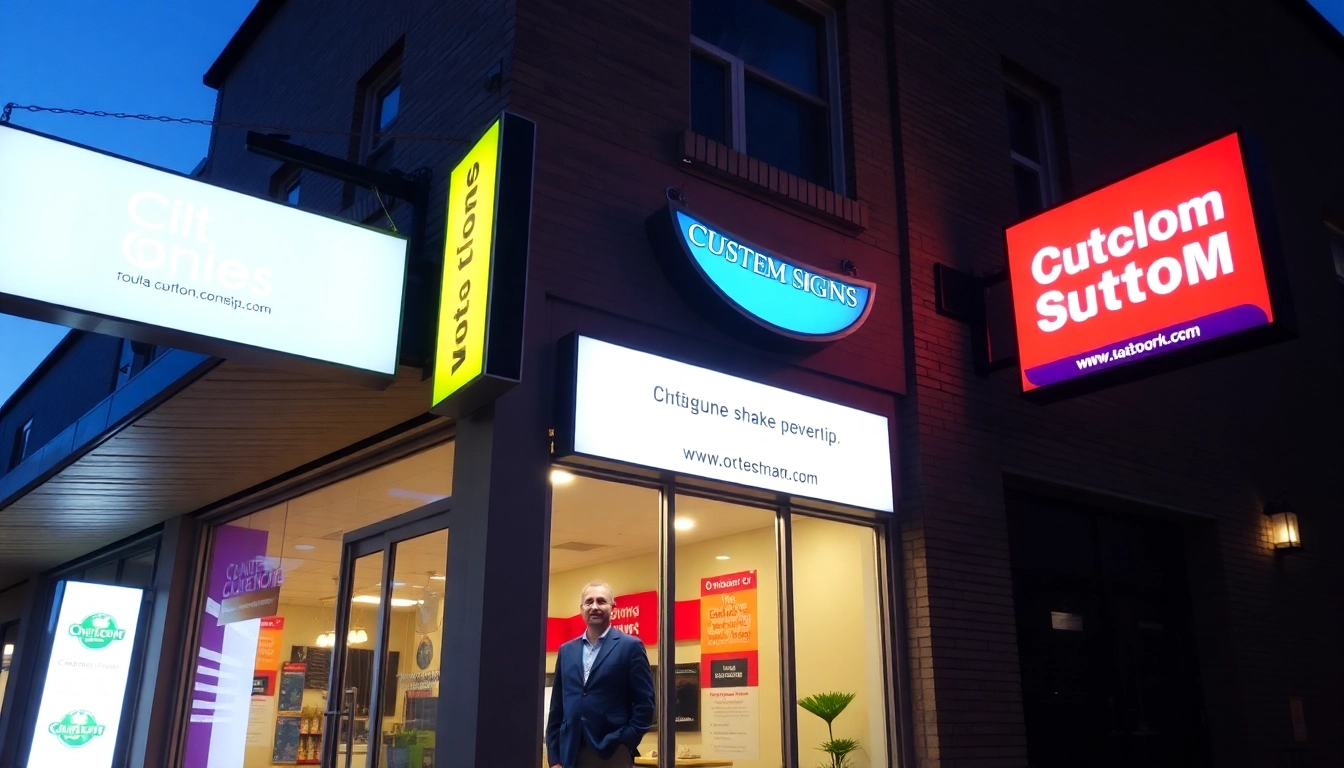Comprehensive Guide to Custom Signs: Elevate Your Business Visibility and Branding
In today’s highly competitive business landscape, standing out from the crowd is essential for attracting customers, building brand recognition, and ensuring long-term success. One of the most effective ways to achieve this is through well-designed, high-quality custom signs. These bespoke signage solutions serve as powerful visual tools that communicate your brand message, guide customers, and reinforce your identity. From storefront signs to interior graphics, custom signs are versatile and impactful components of any comprehensive marketing strategy. This article delves into the myriad aspects of custom signage, providing a detailed roadmap for choosing, designing, and maintaining signs that truly elevate your business presence.
Understanding the Importance of Custom Signs in Business Branding
How Custom Signs Shape Customer Perception
Custom signs significantly influence how customers perceive your business before ever stepping inside. They are often the first point of contact, creating an immediate impression that can communicate professionalism, creativity, and trustworthiness. Well-crafted signs can elevate your brand, making it appear more credible and memorable. For example, a unique, illuminated storefront sign can signal a modern, innovative business, while a vintage wood sign might communicate a rustic, homegrown vibe. The strategic use of color, typography, and materials helps craft an identity that resonates with your target audience and differentiates your brand in a saturated market.
Key Benefits of Investing in Unique Signage
Investing in custom signs offers numerous advantages, including increased visibility, improved customer engagement, and enhanced brand consistency. Custom signage allows you to tailor messages precisely to your marketing campaigns or seasonal promotions, ensuring that your communication remains relevant and compelling. Additionally, high-quality signage can deliver a tangible return on investment by attracting passersby, guiding foot traffic, and increasing sales. Studies have shown that businesses with clear, attractive signage can see up to a 20% increase in customer traffic, underscoring the value of a strategic signage investment.
Aligning Custom Signs with Your Brand Identity
The success of custom signs hinges upon their alignment with your overall brand identity. Your signage should reflect your business’s core values, aesthetic style, and target market. For instance, a luxury brand may opt for sleek metallic or illuminated signs with sophisticated typography, while a family-friendly restaurant might choose colorful, playful graphics. Consistency across all signage—whether indoor, outdoor, or digital—strengthens brand recognition and fosters trust. Collaborating with experienced sign designers can help translate your brand personality into visual elements that communicate your message effectively.
Types of Custom Signs and Their Strategic Uses
Lighting Options: Illuminated, LED & Neon Signs
Lighting plays a vital role in making your signage visible across different times of day and night. Illuminated signs, including LED and neon, enhance visibility and add a distinctive glow that attracts attention. LED signs are energy-efficient, durable, and capable of displaying dynamic messages or animations, making them ideal for promoting sales or events in real-time. Neon signs, with their vintage aesthetic, evoke nostalgia and are popular for bars, restaurants, and entertainment venues. When selecting lighting options, consider factors such as power consumption, maintenance costs, and the visual tone that best fits your brand.
Material Choices for Durability and Style
The materials used in custom signs significantly influence their durability, appearance, and suitability for indoor or outdoor use. Common options include:
- Acrylic: Clarity, modern look, suitable for indoor signage.
- Aluminum: Lightweight, corrosion-resistant, ideal for outdoor signage.
- Wood: Rustic, warm aesthetic, great for boutique or artisanal businesses.
- Vinyl: Versatile, cost-effective, used for banners, decals, and wraps.
Each material offers unique benefits and challenges. For instance, aluminum signs are weatherproof and last for years, while wood signs provide a handcrafted appeal but require regular maintenance in outdoor environments.
Indoor vs. Outdoor Custom Signs: When and Why
Deciding between indoor and outdoor signage depends on your strategic goals. Outdoor signs are crucial for attracting foot and vehicle traffic and must withstand weather conditions. They include monument signs, pole signs, and storefront displays. Conversely, indoor signs focus on navigation, branding, and customer engagement within your premises, such as wall graphics, wayfinding signs, and promotional displays. Proper placement, size, and lighting are vital considerations for both types to maximize their impact and longevity.
Design Principles for Effective Custom Signs
Color, Typography, and Visual Hierarchy
Effective signage employs color schemes and typography that align with brand identity and ensure readability. Use contrasting colors to highlight important information, and select fonts that reflect your brand personality—bold for strength, script for elegance, or playful for approachability. Establish a clear visual hierarchy by emphasizing primary messages with larger fonts or bolder colors, guiding viewers naturally through the information.
Creating Clear and Concise Messaging
Simplicity is key. Your signs should deliver a clear message quickly, especially in environments where passersby only have seconds to interpret the information. Use concise text, universal icons, and avoid clutter. For example, a sign that simply states “Open” or “Sale Today” communicates directly and effectively.
Leveraging Graphics and Branding Elements
Incorporate logos, brand colors, and graphics to reinforce identity and enhance visual appeal. Custom graphics can also help communicate complex information or create an emotional connection. Ensure that all elements are high-resolution and professionally designed to maintain a consistent look across all signage, strengthening recognition and recall.
Implementation Steps from Concept to Installation
Design Development and Approval Process
Creating impactful custom signs begins with a comprehensive design phase. Collaborate with designers or sign companies to develop concepts that reflect your brand and meet your functional requirements. Review prototypes for aesthetics, clarity, and compliance with local regulations. Be prepared for multiple revisions until you achieve a final design that resonates with your vision.
Choosing the Right Signage Materials & Fabricators
Selecting reputable manufacturers with expertise in various materials ensures high-quality craftsmanship. Request samples or references to verify durability, finish, and adherence to specifications. It’s vital to balance cost with longevity and visual impact, especially for outdoor signs exposed to weather conditions.
Installation Tips for Safety and Longevity
Proper installation is crucial. Use professional installers to ensure mounting hardware is secure and compliant with safety standards. Consider environmental factors such as wind, rain, and UV exposure, and select fixtures resistant to these elements. Routine inspections and maintenance, like cleaning and bulb replacements, extend the life of your signage.
Measuring Success and Maintaining Your Custom Signs
Tracking Impact on Customer Engagement
Evaluate signage effectiveness through foot traffic analysis, sales data, or customer surveys. Digital signage offers the advantage of real-time interaction metrics, such as engagement rates and message impressions. For physical signs, observing changes in store visits or customer inquiries can provide valuable insights.
Routine Maintenance and Repairs
Regular upkeep ensures your signs remain attractive and functional. Clean signs to prevent dirt buildup, replace damaged components promptly, and ensure lighting functions correctly. Preventive maintenance reduces long-term costs and preserves brand image.
Adapting Signage for Seasonal Campaigns
Flexible signage allows for seasonal or promotional updates. Interchangeable panels, digital message boards, or removable decals facilitate quick changes to reflect current offers or holidays, keeping your branding fresh and engaging.


